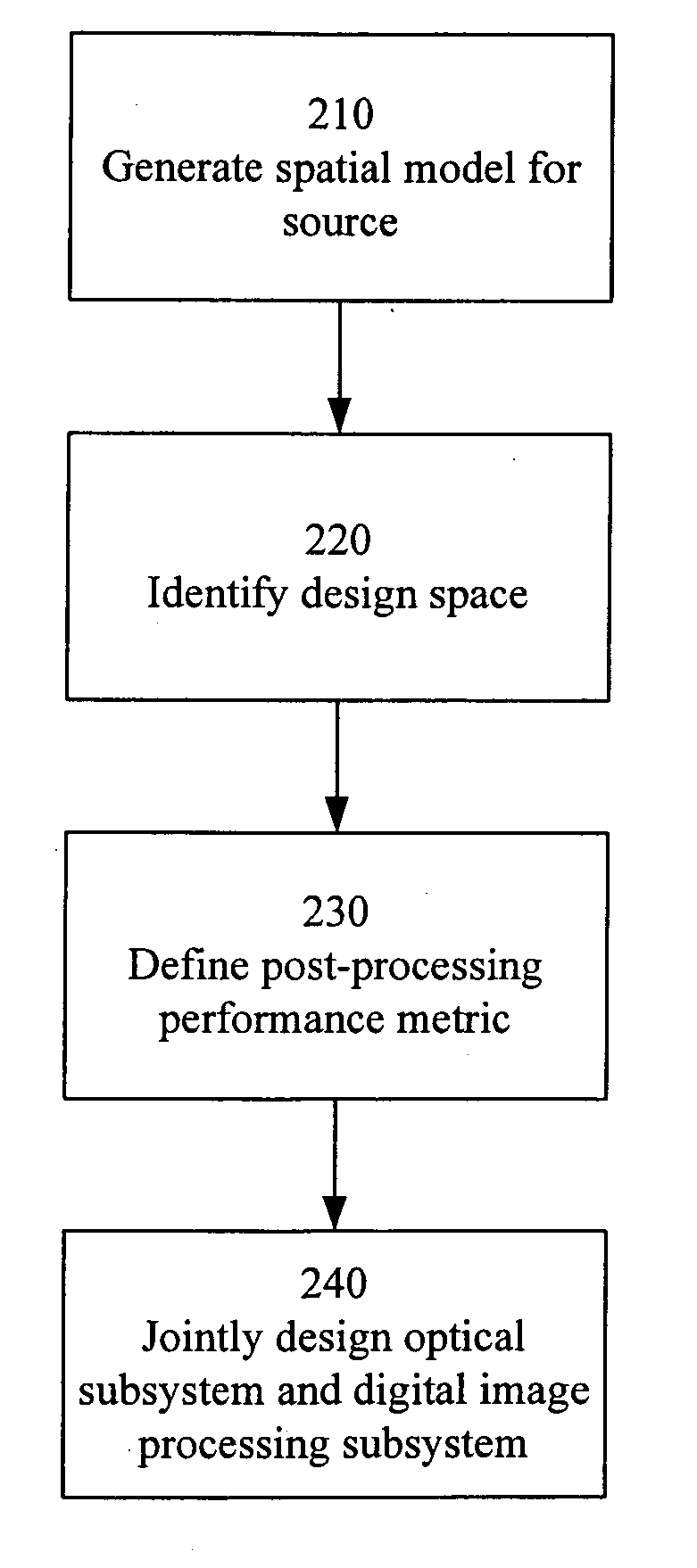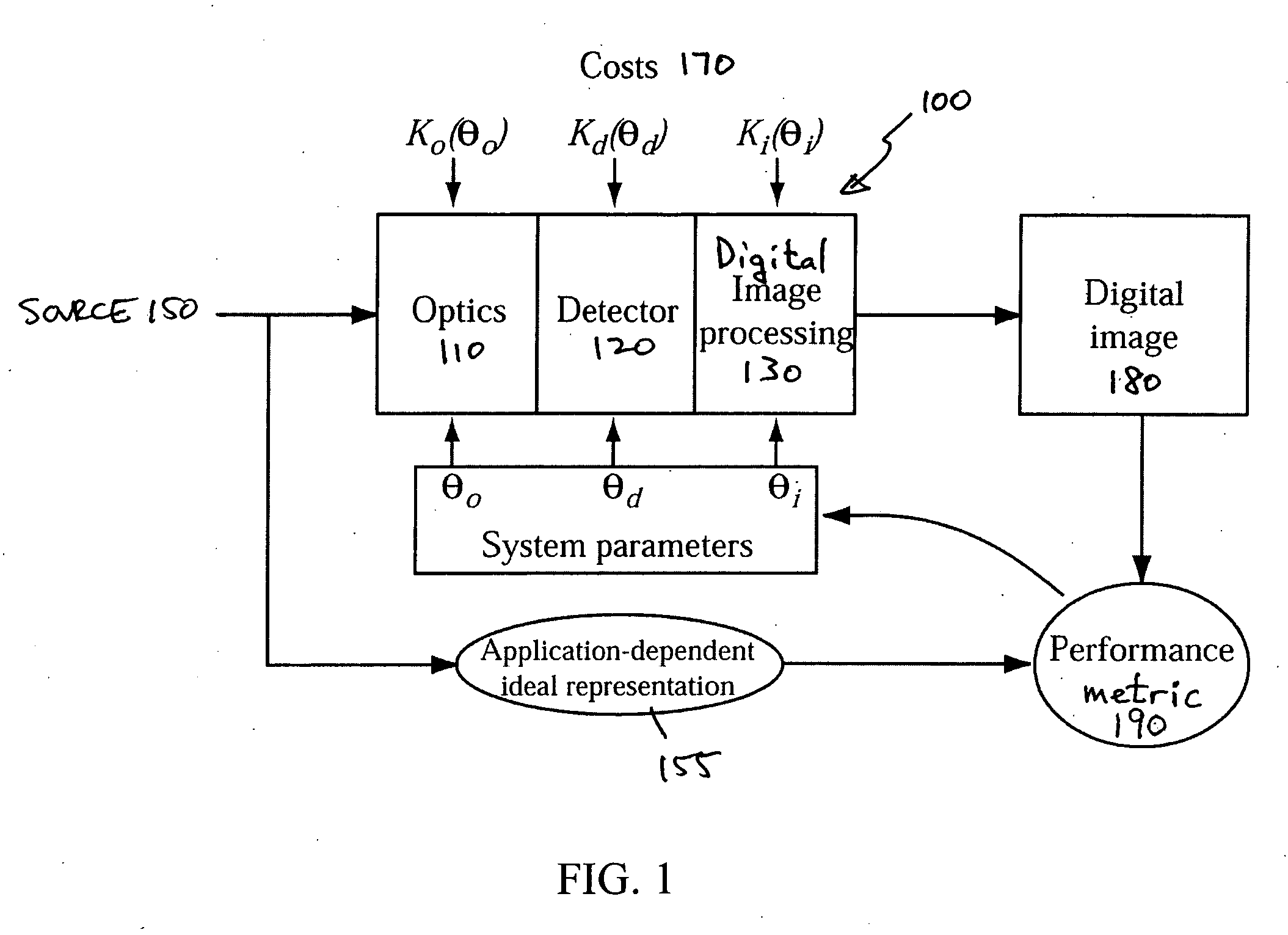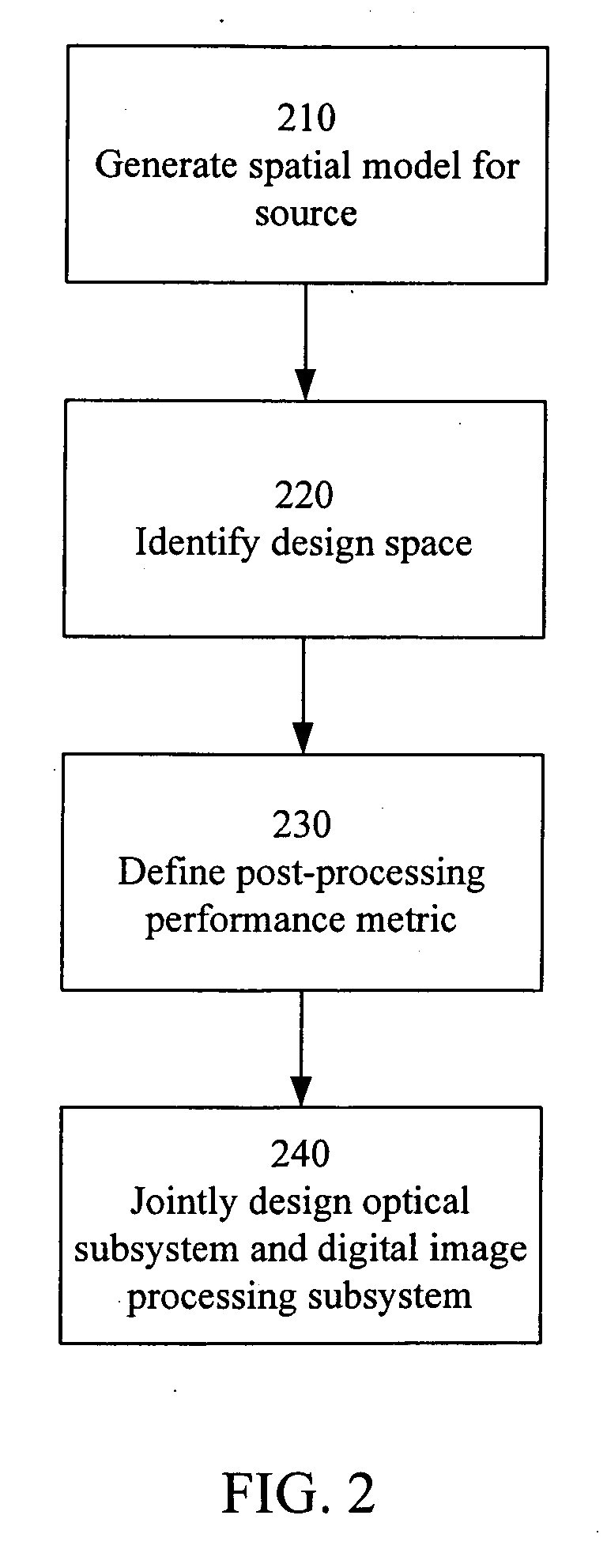End-to-end design of electro-optic imaging systems
a technology of electro-optic imaging and end-to-end design, applied in the field of end-to-end design, can solve the problems of two distinct fields, lack of a common language with which to describe problems, and a unified perspective of designing electro-optic imaging systems, and achieve the effects of fewer components, less “footprint” and the same system performan
- Summary
- Abstract
- Description
- Claims
- Application Information
AI Technical Summary
Benefits of technology
Problems solved by technology
Method used
Image
Examples
Embodiment Construction
[0027]FIG. 1 is a block diagram illustrating the problem of designing an electro-optic imaging system 100. The imaging system 100 includes an optical subsystem 110, detector subsystem 120 and digital image processing subsystem 130. The imaging system 100 is intended to image a source 150 and produces digital image 180. The general design problem is to design the imaging system 100 to “optimize” its overall performance, subject to certain constraints. In many cases, the goal of optimization is to produce a digital image 180 which matches the application-specific idealized version 155 of the input source.
[0028]FIGS. 1 and 2 illustrate an example method for designing an electro-optic imaging system 100 according to the present invention. Referring to FIG. 2, the design method includes generating 210 a spatial model of the source 150. The spatial model of the source may be derived for a specific situation, empirically measured, based on previously developed models or otherwise provided...
PUM
 Login to View More
Login to View More Abstract
Description
Claims
Application Information
 Login to View More
Login to View More - R&D
- Intellectual Property
- Life Sciences
- Materials
- Tech Scout
- Unparalleled Data Quality
- Higher Quality Content
- 60% Fewer Hallucinations
Browse by: Latest US Patents, China's latest patents, Technical Efficacy Thesaurus, Application Domain, Technology Topic, Popular Technical Reports.
© 2025 PatSnap. All rights reserved.Legal|Privacy policy|Modern Slavery Act Transparency Statement|Sitemap|About US| Contact US: help@patsnap.com



